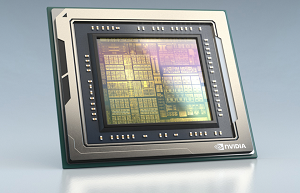8 Port PoE Gigabit switches are the most adopted network devices for video surveillance systems. However, additional functions are necessary for ensuring network operation and transporting video data, including remotely managing cameras, VLAN and QoS.
What is VLAN?
A segment is a LAN section separated from the rest of the LAN by a bridge, router, or switch. Segments are typically used for a particular department.
Functions of VLAN
-
Reduce broadcast domain
Without VLAN, If any of our computers send a broadcast, the switch will overflow it! This means that a single broadcast frame will be overflowed on this entire network. Switch a broadcast frame from all possible ports forwards. The VLAN will keep the broadcast frame within the same domain that Finance departs, for example in our case.
-
Improve the security
You can easily imply security policy to each of the VLANs such as access control list (ACL), and mac address list. You can even forbid different VLANs to communicate with each other even if all of them are being connected to the same PoE switch.
-
Traffic Control
As we know, the resources always have restrictions, not only the bandwidth but also the CPU in each PoE switch. Using a VLAN, certain devices, such as VoIP and IP cameras, can select priority sets to keep their traffic processed even when networks are overloaded.
-
Device management
After the device is assigned to the same VLAN, the device in the same VLAN will have a similar IP subnet. It is easier to locate the devices for daily maintenance.
What is QoS?
Uses of Quality of Service (QoS) may be considered a way to control traffic on a network and ensure the performance of critical applications with limited network capacity. The system allows organizations to prioritize high performance applications to optimize network traffic.
Why adopts QoS?
The video surveillance system is a typical resource intensive system for data. Both transmitting capacity and quality are demanded to ensure the clarity and timeliness of video data transmission.
QoS allows networks and organizations to prioritize traffic with optimized bandwidth, controlled jitter, and lower latency. This is important because high latency and jitter can cause data loss, and dedicated bandwidth is essential for maintaining data quality in sensitive environments.
QoS allows organizations to optimize multiple applications’ performance and gain visibility into their network’s bit rate, latency, jitter, and packet rate. This configuration will allow them to engineer the traffic on their network and change how packets are routed to the internet or other networks, minimizing transmission delays. Additionally, this ensures that the organization provides expected service quality and delivers expected user experiences.
How to adopt VLAN and QoS through PoE Network switches?
First, it has to be a Managed PoE switch and AI PoE Switch. The unmanaged POE can’t achieve the VLAN and QoS. You can’t change the setting in the unmanaged PoE switch; it is plug-and-play. Certainly, you will be unable to assign the VLAN to each port.
The Managed PoE Switch provides network management functionality via WebGUI, NMS, and Cloud. The users can easy to access the network management interface to configure VLAN and QoS
The AI PoE Switch added an AI function based on the unmanaged PoE network Switch via a build-in DIP switch to deploy VLAN and QoS on the video surveillance operation.






